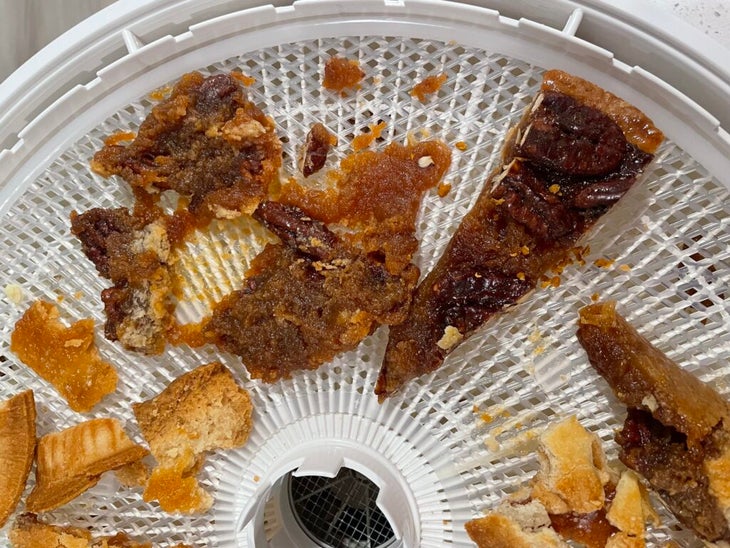Heading out the door? Read this article on the new Outside+ app available now on iOS devices for members! Download the app.
If you’re baking up a storm in anticipation of the holiday, don’t let extra ingredients go to waste, especially pie filling. Resist the urge to eat it straight out of the bowl and dehydrate it instead. On the trail, you can pair reconstituted pie filling with Nilla Wafers, oat-based crumble topping, or other crust substitutes for a perfect dessert. Dealing with leftovers? Buttery crust won’t dehydrate well—fats don’t contain enough water to properly evaporate, and can go rancid in storage— so just scoop out the filling. Fruit and vegetable-based fillings that are low in fat and dairy are your best bet. Master the essentials of dehydrating with this guide.
Can You Dehydrate Pie?
Whole pies and slices won’t dry well; they’re often too high in fat, and too high volume to dry evenly. But that doesn’t mean you can’t put leftover pie filling to good backpacking use. Here are some tips for three common Thanksgiving pies.
Pumpkin
This classic often features heavy cream in the filling, which can go rancid on the shelf once dried. Unless you’re planning to rehydrate and consume your pumpkin pie filling soon, this one can be tricky. That said, plain pumpkin puree dehydrates beautifully (add some spices, maple syrup, and nuts for a festive flavor). Same for cooked sweet potato puree, or dairy-free sweet potato pie filling. Spread the mixture in a thin, even layer and dry at 125°F until it’s no longer sticky to the touch (drying times will vary depending on climate). To aid in even hydration, consider blending your dry filling into a powder. In camp, rehydrate and serve with graham crackers or a crust alternative of your choice. Marshmallow topping? Why not.
Pecan

In theory, pecan pie filling should dehydrate just fine, as it lacks dairy or excessive fats. Dehydrated corn syrup, known as dry corn syrup solids, is a commercially available ingredient that is common in powdered coffee creamers. So, I had high hopes for my dehydrated pecan pie filling. But in my experiment, the filling remained a gluey mess 16 hours into the drying process. Extra nuts? You’ve got the makings for a fancy trail mix.
Fruit Pies
Fruit-based fillings are great candidates for dehydrating. Homemade pie fillings are a better bet than store-bought pies, which often contain more ingredients that might not hold up well in the drying process. Apple and berry crisps are backpacking staples for a reason—they taste just as good once rehydrated. Spread your filling on dehydrator trays and dry at 135°F until there’s no visible moisture and it’s dry to the touch. To check for doneness, remove a piece of dry filling from the tray and let it cool completely. Give it a squeeze; no moisture should release. The mixture may be pliable, but shouldn’t be sticky.
Store your dehydrated leftovers in airtight containers in a cool, dry place (you can vacuum seal if you like, or pop them in the freezer for added longevity).
From 2024
